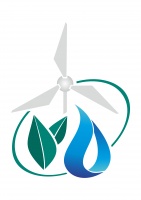Water-charging irrigation for rangelands used for growing forage crops
| Title | Water-charging irrigation for rangelands used for growing forage crops |
|---|---|
| Category of tools | Irrigation technique and technology |
| Field of application | • Use of water resources |
| Usability of practice for adaptation to climate change | High |
| Used by |
Country: Kazakhstan Province: Jambyl Region District: Talas District Settlement: Village of Sadu Shakirov |
| Local specifics |
The site is located in the desert foothill plain in South-ern Kazakhstan (internal drain area) at the very end of Sharuashlyk Irrigation Canal. |
| Photos |
|
| Practice usage period |
Start date: 01.05.2008 End date: 30.04.2009 |
| Problem solved through this practice |
Acute water shortage; land degradation in the village of Sadu Shakirov; abandoned irrigated arable lands used only for year-round cattle grazing. For a long time, the irrigation canal was not operation-al and, thus, became dilapidated. The situation in the area was aggravated by climate change impacts (de-creased quantity of early spring, summer and winter precipitation, increased average annual temperature, spring and autumn frost bites and summer droughts). |
| Tools used in the practice |
Method of autumn and winter water-charging irrigation |
| Description of the practice and its results |
Actions: Results: Financial and economic: Technical: |
| Lessons learnt and recommendations made |
Lessons learnt: Application of water-charging irrigation demonstrated the efficiency of water use and allowed local popula-tion to go through winter without losing livestock. Recommendations: |
| Source of practice |
Traditional tools transferred from generation to generation that proved their efficiency in modern conditions |
| Brief information on the project |
Project title: Fall and early spring Irrigation of arable land and pastures as an adaptation mechanism of ra-tional water use in Southern Kazakhstan Duration: May 1, 2008 – April 30, 2009 Project goal and objectives: reduce land degradation due to climate change by way of rational use of irriga-tion water. The project was implemented to prevent loss of cattle due to forage shortage during alternating droughty years. Project beneficiaries: local population. Project implementer: Kogal LLC |
| Funding source | Kogal LLC |
| Information sources |
1) UNDP Compilation “Climate change adaptation: ex-amples from Uzbekistan and Kazakhstan”, Tashkent 2012; |
| Form submission date | 29.03.2018 |
| Print Compare with other practice |




